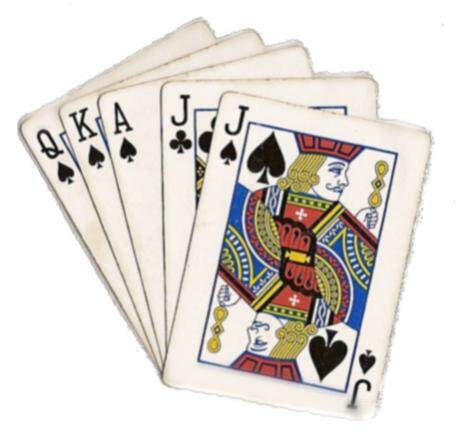
Playing cards are a teacher’s secret weapon. You should always have a deck at home and possibly one in a travel bag or the glove compartment of the car. Whenever you have a spare couple of minutes (that’s literally all it takes), grab them and help your child conquer times tables with one of these super-fun games!
ONE
Shuffle the deck and draw two cards without showing your child what they are. Call them out as a multiplication question. For example, if you pull out a 5 and a 9, you would simply ask: “What are five nines?”
Depending on their confidence levels, you can give them as much or as little time as you like to answer (you’re aiming for an answer within 5 seconds).
TWO
Similar to the game above but this time it involves both of you more actively. Shuffle the cards and give half the deck to your child. Each of you turn over your top card and whoever can name the product of the two numbers first wins both cards. Keep going until one of you has all the cards.
THREE
Turn over two cards and read them like a two-digit number. Ask your child for a factor pair for this number. For example, if you turn over a 2 and a 4, making 24, your child could say, 1 and 24, 2 and 12, 3 and 8 or 4 and 6. You might want to increase the challenge by not allowing the factor pair of 1 and the number.
FOUR
Shuffle the deck and turn over a random card, this will be your multiplier (if you turn over a 6, you’re doing the 6-times table). Next, turn over the remaining cards in turn and challenge your child to say the times table sentence. For example, let’s stick with 6 being the multiplier, if you turn over an 8, your child would have to say: “six times eight is forty-eight” to get the card.
FIVE
Shuffle the deck and deal out five cards each. Each of you chooses two of your cards to multiply together with the aim of beating your opponent’s product. For example, if you had a 2, 5, 9, 6 and a 3, the highest product you could make would be 9 x 6 = 54. If your child has a 9, 9, 2, 4, and a 6, they would beat you with 9 x 9 = 81. Put any played cards back in the box and deal out more so that you always start a round with five cards in your hand.
Quick adjustments:
No-one knows your child better than you. If you think they are struggling, offer them a clue… but don’t tell them the answer. Try…
- Asking what 2 (or 5 or 10) times the number is?
These are likely to be more familiar to your child and from these helpful ‘signpost’ multiplications, they might be able to get to the answer. - Partitioning the number.
This means breaking the number into easier parts. For example, 7 can be partitioned into 5 and 2, both of which are easier multipliers. 8 can be partitioned into 4 and 4, or 5 and 3 or even 2 and 2 and 2 and 2 (double, double, double again is likely something they would have heard in school).
Once they have calculated the partitioned elements, they just add their answers together. - Giving them more time.
Always remember, these are supposed to be confidence builders! If your child only manages a few in five minutes, that’s fine. The idea is that they will become more familiar with their times tables eventually. - If you think your child is finding things too easy, try…
- Making your multiplier 10 times bigger (2 -> 20, 9 ->90 etc)
Not only does this extend the game it also forces your child to consider the effects of multiplying by powers of 10. - Making your multiplier 10 times smaller (2 -> 0.2, 9 ->0.9 etc)
Again, this encourages and builds links to familiar times tables facts and the effects of powers of 10. - Reverse it!
If your child is doing really well, play games 1 and 2 in reverse. Reveal your product and have your child calculate the division fact (if you have 54, they would have to say, for example, “54 divided by 9 is 6”.
When I play these games in class or in one-to-one sessions, I tend to remove the aces and the face cards. This is optional, however. The Aces are worth 1 and the face cards are worth 11, 12 and 13 respectively. There is no reason your child can’t work with these numbers as well!



Add comment
Comments